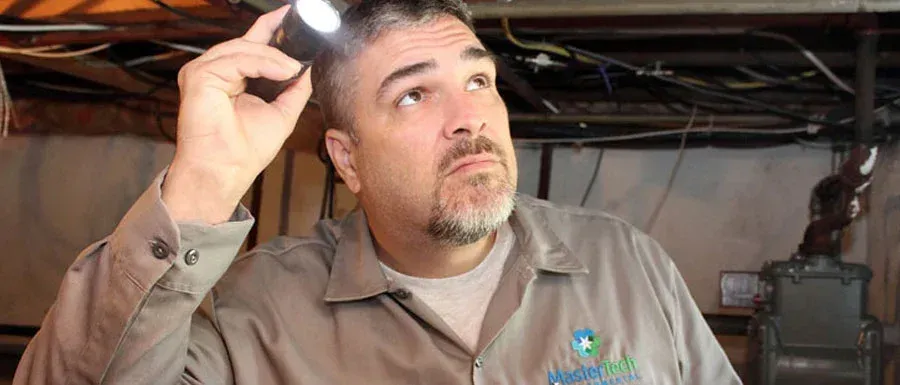Mold Inspection and Testing: Understanding the Process for a Healthier Home

If you’ve ever spotted a suspicious patch of discoloration on a wall or caught a whiff of something musty in the air, you know how unsettling the thought of mold can be. There’s plenty of information out there, but it often feels overwhelming. Let’s break down some fundamental ideas about professional mold testing, what a proper inspection entails, and why mold inspection Myrtle Beach can give homeowners the peace of mind they need.
Why Moisture is the Real Driver
Mold doesn’t just pop up out of nowhere. It thrives when indoor spaces have the right conditions—moisture and warmth. Small leaks, damp surfaces, or poorly ventilated areas can all set the stage for fungal growth. While mold spores are everywhere (even in outdoor air), they typically stay harmless unless excess moisture lets them settle in and multiply indoors. That’s why any serious inspection focuses on finding hidden water damage or high-humidity pockets before mold becomes a real problem.
Inspectors: What They Do (and Don’t Do)
A thorough mold assessment isn’t just about walking through a house with a flashlight. Qualified inspectors need a strong grasp of building construction, moisture dynamics, and how mold might appear inside walls or beneath flooring. Unfortunately, no single certification or license guarantees every inspector has the same level of expertise. Still, look for professionals who:
· Emphasize actual on-site inspections rather than relying solely on lab tests
· Understand both the science of mold and the structure of homes
· Provide clear reasoning for why they choose specific sampling methods
It is important to remember that an inspector’s report can’t and shouldn’t diagnose medical conditions. If you’re experiencing unexplained symptoms, testing can help confirm a mold issue, but you’ll still want to speak with a healthcare professional about any health concerns.
The Role of Sampling and Lab Analysis
A mold inspector might collect air or surface samples to see what types of spores or fungal materials are present. Air samples can tell you a lot about current conditions but may vary significantly from day to day. Surface samples—like tape lifts or swabs—can show whether mold has started growing in a particular area. Each method has strengths and limitations. For instance:
1. Air sampling can help compare mold spore levels inside versus outside. However, a snapshot of airborne spores may not capture hidden mold behind walls.
2. Surface testing can confirm active growth or “tabletop mold” (spores that simply landed on a surface but never rooted).
3. Culture-based tests can precisely identify mold species, though some species don’t grow well in lab conditions.
4. Spore trap or microscopic analysis allows quick insight into the variety and quantity of spores but often lumps them into broad groups.
In many cases, a mix of methods and a detailed visual assessment are used to get a comprehensive picture. If you’re considering mold inspection Myrtle Beach, ask potential inspectors how they decide which tests to run and how they interpret the results.
Understanding the Reports
Professional mold reports can be loaded with technical details, making them daunting to read. However, a well-organized report should include these basics:
· Inspection Purpose - Why was the inspection performed? Is the goal to find hidden growth, assess post-remediation success, or address occupant concerns?
· Building Details - Age, type of construction, and notable structural features can all play a part in why mold might appear.
· Observations - Inspectors should note visual signs of water damage, musty odors, and any unusual conditions that might hint at concealed mold.
· Sampling Details - Look for mention of how samples were taken, what equipment was used, and where the samples came from. This should connect directly to the findings in the lab analysis.
· Lab Results and Interpretation - You’ll often see spore counts, mold species identified, or notes about active growth on surfaces. Good reports compare indoor and outdoor results and explain whether there’s evidence of substantial indoor mold growth.
· Conclusions and Recommendations - Inspectors might advise repairing leaks or removing damaged materials. If the problem persists, professional cleanup is typically the next step, which can be verified by a follow-up inspection.
When and Why Mold Testing Matters
Some homeowners think a quick air sample is enough to confirm or dismiss a mold problem. But testing is only one piece of the puzzle. Sometimes, just seeing visible mold or smelling a strong, musty odor gives you enough reason to investigate further. In other situations—like complex water damage or health complaints with unclear origins—testing can help clarify hidden issues.
For instance, after significant flooding or a plumbing mishap, an inspection might reveal suspicious stains or dampness behind drywall. Surface tests could confirm mold growth, prompting timely fixes that save you from bigger headaches down the road. If you suspect something lurking behind walls or your family has unexplained allergies, a mold inspection Myrtle Beach could protect your investment and well-being.
Mastering Mold Management
No matter the testing method, the core lesson is always the same: control moisture, and you’ll control mold. Simple measures like repairing leaks, using dehumidifiers in damp rooms, and ensuring proper ventilation can keep spores from taking hold. If you need help along the way, MasterTech Environmental can guide you through the process and offer comprehensive solutions.



